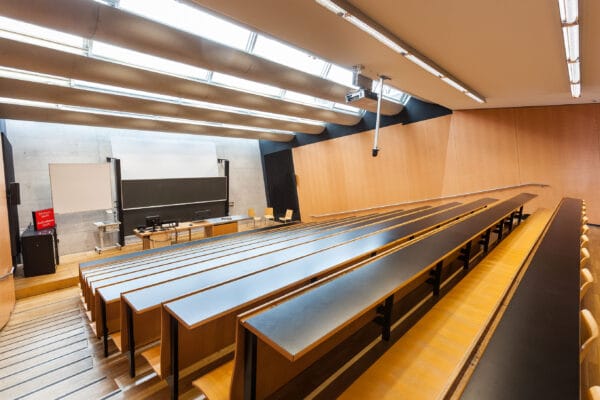
NAME:
SOWI - HS 3
BUILDING:
SOWI
FLOOR:
0
TYPE:
Lecture Hall
CAPACITY:
140
ACCESS:
Only Participants
EQUIPMENT:
Beamer, PC, WLAN (Eduroam), Overhead, Blackboard, Sound System, Microphones, Handicapped Accessible
The Rimac River Basin in Peru is characterized as an area highly prone to flooding and landslides. Located in the Andes Mountain Chain and adjacent to the country’s capital, Lima, the effects of these events include infrastructure destruction, health impacts, absence of drinkable water, and isolation of cities, among other consequences. In the context of these challenges, the University of Applied Sciences of Bern (BFH-HAFL) and SENAMHI Peru carry out a case study of assessing socio-economic benefits of climate services (CS) in the framework of the projects ENANDES “Enhancing Adaptive Capacity of Andean Communities through Climate Services” and ENANDES+ “Building Regional Adaptive Capacity and Resilience to Climate Variability and Change in Vulnerable Sectors in the Andes”. A CS comprises a User Interface Platform (UIP), which facilitates the development of customized services and fosters stakeholder interaction. In the Rimac case, the CS is an Early Warning System disseminated as a bulletin from the National Meteorology and Hydrology Service of Peru (SENAMHI). This EWS passes through various institutions until it reaches the local governments, which have the decision-making power over the emission of the alert to the population. However, given its heterogeneous nature, with multiple municipalities dispersed across the basin, the cities have different exposure patterns to the events. Initial research findings have revealed the existence of a dual CS, with the official system administered by SENAMHI complemented by an unofficial practice among the local population. This alternative system of knowledge encompasses traditional practices, which employ observations of precipitation patterns and the color of mountains as indicators of landslides and floods. The coexistence of these two systems complements the data availability from SENAMHI, particularly in areas lacking sufficient hydrometeorological stations to provide accurate and timely CS. Consequently, local communities have developed community-level mechanisms to reinforce their resilience. The findings indicate a substantial potential for knowledge co-creation processes for CS based on the two parallel systems including scientific, administrative as well as local knowledge which can effectively reach out to the communities and take up the users’ needs at the same.
